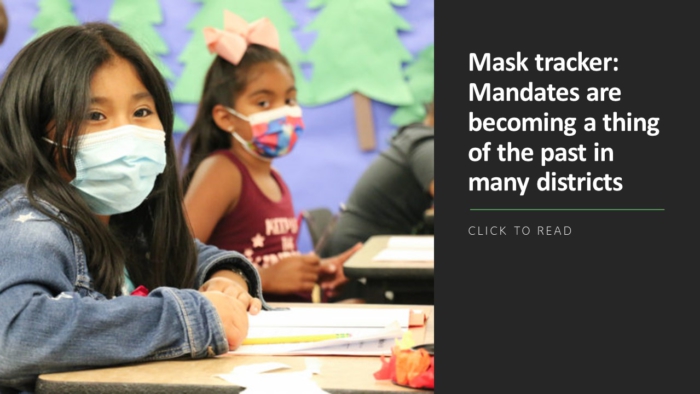
Dynamic digital platforms, remote access anytime, anywhere, artificial intelligence, data-driven insights, and differentiated instruction The pandemic has accelerated ed tech usage in the classroom, and most students are already engaging with innovative technologies today. We may not talk about it as much, but the same technological advancements have the power to transform teacher education and professional development.
Our teachers deserve engaging, relevant learning opportunities, too, and I believe that in 2022 we will continue to see innovations in professional learning that embrace technology to support, honor, and inspire teachers as learners. We will see technology that allows teachers to have flexible, personalized and immediate access to instructional experts, coaches, and colleagues who will help maximize valuable planning time, leverage effective teaching strategies, and engage students.
Teachers are welcoming the opportunity to control the pace and place of their own learning based on their unique needs. HMH’s latest Educator Confidence Report showed us that not only are educators more confident in their use of technology than ever before, but 77% believe that technology will help them be better teachers moving forward. Given enormous teacher workloads and the ongoing challenges of pandemic learning, there couldn’t be a more critical need for educator support right now.
Historically, K-12 educator professional development has meant time out of the classroom in a seminar or workshop, usually taking full days at a time. This model means lost learning time for students, creates overwhelm and fatigue for teachers, and lacks the continuous feedback and support needed for effective development. Given staffing shortages nationwide, it’s hard enough to keep schools open, let alone schedule time for teachers to be out of the classroom for trainings. The needs of a first-year teacher compared to one with a decade of tenure are also invariably going to be different, so a one-size-fits-all approach is not the best use of everyone’s time. Teachers want training and coaching that is aligned to the needs of their instruction and their students, learning from both peers and experts alike as part of a community of practice.
Now, technology is enabling us to flip this outdated model and really meet teachers where they are in their professional journey.
The “New PD” is:
On-demand and flexible
With integrated technology, learning is ongoing and does not stop once the ‘PD day’ is over. At HMH, this takes many forms, and one is on-demand coaching. Teachers value the continuous opportunity to connect with a coach, all former or current educators. Through live, on-demand virtual sessions, teachers receive immediate useful guidance when they need it most, as compared to the old model of in-classroom observation followed by feedback afterwards. They always have a “coach in their corner.” This is more respectful of the teacher as a learner, reduces disruption and increases flexibility and access to professional services. PD is an ongoing process and teachers learn best when given the flexibility to choose their own PD structure.
Built with cutting-edge tech
At HMH, we are also setting the foundations for artificial intelligence to be integrated into our teacher coaching. Similar to differentiated learning for students through A.I., an algorithm can take into account teaching experience, preferences in modality, what’s being taught and more, and then personalize tools. The algorithm learns and gets more sophisticated, providing better feedback and recommendations, enabling a personalized pathway to teacher success. This makes professional learning smarter over time and improves the experience for educators, giving them time to focus on critical connections with their students.
An opportunity for two-way conversation
Tech not only provides teachers with improved access to information and ideas, but also allows for a stronger feedback loop. There’s been so much focus on innovation for students—how might that innovation be used to support teachers? And might we let teacher voices inform how we innovate as a learning technology company? Listening to teachers and hearing their concerns is a fundamental way to meet the needs of educators and the students in their care. We have seen vibrant communities of teachers continue to grow, sharing valuable insights not only with each other but with the companies that make the solutions they use every day. Communities like HMH’s Teacher’s Corner, an online space for continuous professional learning within our digital teaching and learning platform, Ed, are growing larger and provide a diverse range of teacher voices, further allowing teachers to take control over their learning. Teachers recognize the benefit of immediate access to peer collaborators and for us, their insights are invaluable as we work to continuously improve our solutions to better serve them.
The time is now
We’ve seen progress, but still, educator confidence in the profession is at its second-lowest since HMH launched the Educator Confidence Report six years ago. More than ever, there is a desire for control, flexibility, and the integration of on-demand technology in the workplace. At HMH, we see this as a call to action. By reworking and reexamining our professional development practices, we are focusing on the future of education. With teachers newly attuned to the tech world from having to pivot so quickly into hybrid and remote environments, they are primed to push the boundaries of tech not only in their classrooms but in their own growth.
2022 will be the year for the ed tech industry to better support teachers through on-demand and tech-integrated professional development that helps get greater, faster results for teacher, and ultimately student, success.
Amy Dunkin is EVP and general manager of Professional Services at ed tech company Houghton Mifflin Harcourt. She has a Master of Business Administration from Columbia University and a Bachelor of Arts from Northwestern University.
More from DA



